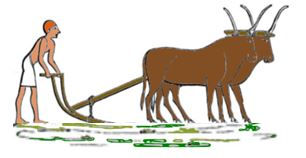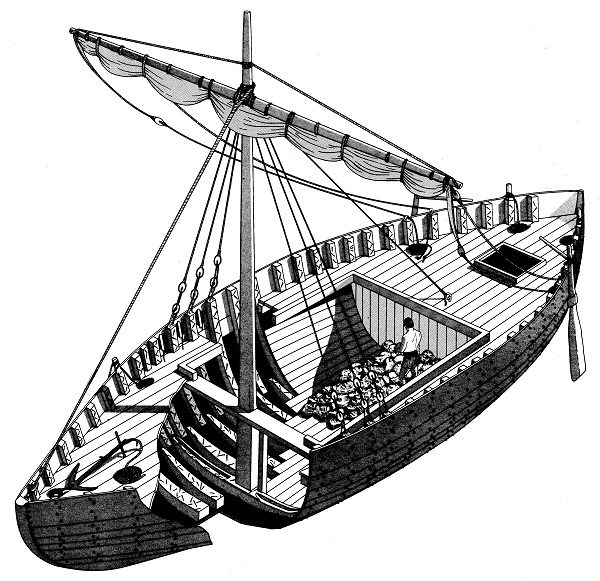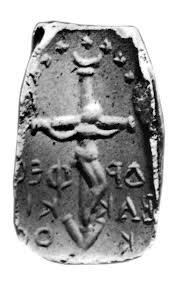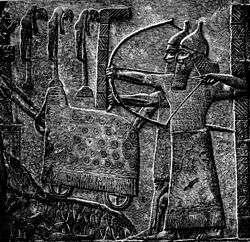-
Posts
301 -
Joined
-
Last visited
annakot's Achievements
-
 Jimi-L reacted to a post in a topic:
Jesus may not have died on the cross, Christian scholar claims.
Jimi-L reacted to a post in a topic:
Jesus may not have died on the cross, Christian scholar claims.
-
 Jimi-L reacted to a post in a topic:
Jesus may not have died on the cross, Christian scholar claims.
Jimi-L reacted to a post in a topic:
Jesus may not have died on the cross, Christian scholar claims.
-
 Jimi-L reacted to a post in a topic:
Jesus may not have died on the cross, Christian scholar claims.
Jimi-L reacted to a post in a topic:
Jesus may not have died on the cross, Christian scholar claims.
-
 Jimi-L reacted to a post in a topic:
Jesus may not have died on the cross, Christian scholar claims.
Jimi-L reacted to a post in a topic:
Jesus may not have died on the cross, Christian scholar claims.
-
The other synonyms for xylon which means wood, are timber and tree, which in itself does not exclude another piece of wood in my opinion, but could merely be describing the main piece to which whatever else (be it a person or another piece of wood) can be attached. There are many nouns naming something by its main component, but which is actually composed of more than that one thing. For example "wheel" in one language means "wheel" in English, but it also means "bicycle". The main component of the bicycle is obviously the wheel, but it also consists of several other parts. According to Strong's dictionary regarding the etymology of the word stauros: The word stauros comes from the verb ἵστημι (histēmi: "straighten up", "stand"), which in turn comes from the Proto-Indo-European root *steh2-u- "pole",[1] related to the root *steh2- "to stand, to set". This also does not necessarily exclude another part to the "standing" instrument.
-
Sorry, I know I started this debate and then I got so busy that I couldn't get on here until now. My main concern was what @carlos alluded to already which was finding evidence for/against what people living in Jesus' day understood under the meaning, or more precisely the word, "stauros" and I quoted an example with the word "gay". What gay meant in the past doesn't apply in the present. Thank you Carlos for bringing up the issue of translation bias, and/or tampering. With regard to translation, that was one of the things I could see as a problem. I am not sure who translated the works of Lucian, but if it was someone who was convinced that Jesus died on a T shaped instrument then this is what he would have promoted. Translation is indeed a big problem, as anyone who speaks more than one language can appreciate. In the case of Lucian, we have to remember he was a "tongue in cheek" writer, a satirist, so most of what he wrote couldn't be taken seriously, or may have been misunderstood. He used terminology of that time that modern translators may not understand. For example, if a contemporary English author wrote "they grilled him until he spilled his guts" how would someone who was not familiar with this type of "slang" understand that, and how would they translate that into their language? Would they think this was a horrifying case of torture, or would they know that it merely meant this person was interrogated until he told everything? I just wouldn't want to be in a situation where I am insisting on Jesus dying on a simple stake, for the sole reason that we do not want to identify with anything to do with Christendom. Was this initially one of the main reasons why we dropped the cross? This is not a rhetorical question. I really do not know. All I am familiar with is that as Bible students we had as our "symbol" the cross and crown and then later, with Br. Rutherford, that was abolished. Does anyone know the full story behind that? Was it because someone had stumbled upon proof that Jesus did not die on a cross, or was it because we started distancing ourselves from Christendom and as the cross is Christendom's symbol, did someone start investigating whether Jesus really died on a cross to add weight to our reason for getting rid of it? IMO, most important thing, and I think most of us agree, that regardless what instrument of torture Jesus died on, we would not use the shape of that instrument in our worship anyway. Perhaps the discussion about cross or stake will remain a case of semantics
-
"Evidence from the bible is an upright stake" However, the problem with that is that although the word STAUROS originally meant an upright stake in pre-Christian times, (BCE) there is evidence that the word STAUROS in the first century (AD) could have meant an upright stake with another piece of wood attached to it as well. Remember, the Bible does not describe the torture device. It merely calls it a STAUROS. BUT The meanings of words change. Decades ago, the English word gay used to mean happy. Today it means homosexual. If someone read one of Shakespeare’s plays where he describes a couple as being gay, they would know he was talking about the couple being merry/happy. If you then read a similar sentence from a novel written today, you would know the author was talking about the couple being homosexual. Now just for the sake of an illustration, let’s say someone 2,000 years from now is reading both texts, the one by Shakespeare, and the one by our modern author, how do they decide what each author meant? So similarly, how do we know what the Bible writers meant? One has to find out what the term STAUROS meant to people in general sometime before the first Century and after first Century. And the only way to do that is to look for evidence of some description or depiction of something termed a STAUROS in the First Century. We already have evidence that STAUROS meant an upright stake in the centuries prior to the first Century, nobody is disputing that. So the really the issue is all about the later definition of the word STAUROS. Some say that the meaning of the word STAUROS didn't change until the 4th Century AD, but there is evidence that it may have been a lot earlier than that, because there are descriptions of it from the 2st Century. For example Justin Martyr (100-165 AD) writes: " The sea is not traversed except that trophy which is called a sail abide safe in the ship; and the earth is not ploughed without it: diggers and mechanics do not their work, except with tools which have this shape. And the human form differs from that of the irrational animals in nothing else than in its being erect and having the hands extended, and having on the face extending from the forehead what is called the nose, through which there is respiration for the living creature; and this shows no other form than that of the STAUROS". Not sure what he means by the nose though.. ( I also mentioned Lucian of Samosta, describing outstretched arms..)
-
Lol, that's because it's the same in both books. It's a quote from the two books one is out of print now (what does the Bible teach us) and is the replacement for the other one (What Does the Bible Teach Us). But which ever book you use to study with a student, it says Jesus did not die on a cross. The point being, as the our website says: "The Bible does not describe the instrument of Jesus’ death, so no one can know its shape with absolute certainty". Just realied Burt already said similar, lol
-
The thing is, the "What does the Bible teach book" says this in the appendix: THE cross is loved and respected by millions of people. The Encyclopædia Britannica calls the cross “the principal symbol of the Christian religion.” Nevertheless, true Christians do not use the cross in worship. Why not? An important reason is that Jesus Christ did not die on a cross. --------------------------------------------- The "What does the Bible teach us" book in the end notes says this: 2. Jesus did not die on a cross. --------------------------------------------- We use both books in our Bible study with students. So what are we supposed to tell our students?
-
The issue here is not the different naming of the same event or object. It is irrelevant in this case (that is why I said it was Lucian's (satirical) interpretation of a play that was written some 500 years earlier) the issue is Lucian's description of the "fastening" ; that each arm was fastened separately "stretched from crag to crag", and that he called that "a·na·stau·roʹo" that was the important point. Here is a depiction of it on a relief from the Temple of Aphrodite at Aphrodisias. The question is; why did Lucian call it "a·na·stau·roʹo" when he could have called it anything else? Where did he get the idea from? Unless this was the actual position for those executed on a stake (stauros) in around 150 AD?
-
I am no expert on crosses either @carlosbut I do love detective work. I agree with you entirely. Semantics about the meaning of words does not impress me. You have experience with that as someone who speaks more than one language I'm sure. I used to proofread and translate. You have to know which word to use according to context, that is why Google translate fails, because it does not understand context. I'm sure you've noticed some very funny translations by Google! Language is very interesting as it develops. However, what I found is entirely different. I had hoped I could find either a sculpture or some artistic depiction of the torture implement from before the Christian era which could connect the origin to what may have been used in Jesus' case. But besides the dubious depiction of the amulet with the crucified man, that you mention I did not find any depiction of crosses used in executions. Evidently, visual artists weren't as prolific as writers though because I did find something of a clue from the works of the 2nd century satirical writer Lucian of Samosata. It's true, he lived a 150 or so years into the Christian era, but it's the closest compared with the supposed "first" depiction of the shape of the cross as a torture device in the 4th century, (after which the art world exploded with Christendom's crosses!) First, as many of you know, the etymology of stauros: The R. S. P. Beekes, Etymological Dictionary of Greek, Brill, 2009, says on page 601: The word stauros comes from the verb ἵστημι (histēmi: "straighten up", "stand"), which in turn comes from the Proto-Indo-European root *steh2-u- "pole",[1] related to the root *steh2- "to stand, to set" Back to Lucian. Lucian of Samosata, (circa 125-180 AD) was a satirical writer and in his work "Prometheus on Caucasus" he uses the Greek word stauros with its' various forms such as: Anestavrostho, stavromenos, and stavrosi etc. which translators have translated as “let him be crucified” “crucified” and “crucifixion” respectively. ἀνεσταυρώσθω (Anestavrostho - let him be crucified) σταυρωμένος (stavromenos – crucified) σταύρωση (stavrosi- crucifixion) In his writing about Prometheus he apparently gives us an idea of what he thought the stauros looked like: Hermes: This, Hephaestus, is the Caucasus, to which it is our painful duty to nail our companion. We have now to select a suitable crag, free from snow, on which the chains will have a good hold, and the prisoner will hang in all publicity. Hephaestus: True. It will not do to fix him too low down, or these men of his might come to their maker's assistance; nor at the top, where he would be invisible from the earth. What do you say to a middle course? Let him hang over this precipice, with his arms stretched across from crag to crag. Hermes: The very thing. Steep rocks, slightly overhanging, inaccessible on every side; no foothold but a mere ledge, with scarcely room for the tips of one's toes; altogether a sweet spot for a crucifixion. Now, Prometheus, come and be nailed up; there is no time to lose. Prometheus: Nay, hear me; Hephaestus! Hermes! I suffer injustice: have compassion on my woes! Hermes: In other words, disobey orders, and promptly be gibbeted in your stead! Do you suppose there is not room on the Caucasus to peg out a couple of us? Come, your right hand! clamp it down, Hephaestus, and in with the nails; bring down the hammer with a will. Now the left; make sure work of that too.--So!--The eagle will shortly be here, to trim your liver; so ingenious an artist is entitled to every attention. This website shows the Greek version with the English translation. Unfortunately I wanted to go to the next page as well and then couldn’t go back because I had reached my limit for pages (which seems to be one (!). So don’t make the same mistake as me, unless you want to subscribe. https://www.loebclassics.com/view/lucian-prometheus/1915/pb_LCL054.241.xml ------------------------------------------------ The Greek playwright Aeschylus (circa 525 -456 BCE) wrote (supposedly) the original play Prometheus Bound* and does not mention a stauros but that doesn’t change the idea that stauros could have been a stake with a cross beam as per Lucian’s satirical interpretation of the Prometheus mythology/legend. In one of his other works "the death of Peregrine" he mentions the stauros with relation to Jesus: "Peregrine, all this time, was making quite an income on the strength of his bondage; money came pouring in. You see, these misguided creatures start with the general conviction that they are immortal for all time, which explains the contempt of death and voluntary self-devotion which are so common among them; and then it was impressed on them by their original lawgiver that they are all brothers, from the moment that they are converted, and deny the gods of Greece, and worship the crucified sage, and live after his laws. Keep in mind Lucian was non Christian writer. So the question is: Where did Lucian get his idea for the shape of the stauros? Or was his work mistranslated? Or were his original writings tampered with to change the description of how Prometheus was nailed to the crag? Or were people already executed on a cross beam in the 2nd Century as opposed much later (4th century)? You might think of other questions.... *Prometheus Bound - by Aeschylus "But forcibly to bind a brother God, In chains, in this deep chasm raked by all storms........In bonds of brass not easy to be loosed, Nailing thee to this crag where no wight dwells" http://www.sacred-texts.com/cla/aesch/promet.htm
-
Thank you 😁. I have just found something else very interesting. But it is more in favor of the cross, or at least a shape where the arms would have to be outstretched, unfortunately 😣 . It's not that I am trying to find evidence for the cross (I don't really care what shape it was) but it's just part and parcel of investigative work. Sometimes you find things you didnt expect. I will be interested to see what @carlos thinks about it. Right now I don't have time to write any more, but I will as soon as I can!
-
To me, saying "tree" is not convincing enough for me to think of one piece of wood. After all, a tree consists of an upright trunk and horizontal branches, and trees growing in arid areas have very short trunks, for example the olive tree*. Also using secular arguments for something that historians and archaeologists can only speculate on, is not convincing either (for me). Now in the case of the Jews ( Deut 21:22,23) hanging someone on a tree, meaning just an upright pole or stake, could be physically problematic. Have you tried hanging anything on an upright pole? Like a coat for example? You would have to drape it over the top, or hang it on a nail in the pole. Now think of a man, who weighs on average 180lbs. How would he be hung on there? I don't think the Jews nailed anyone to the "tree". If they were to hang someone they would have perhaps tied him like the native north Americans tied people to the totem pole. But without any support on the feet, (some kind of platform) this person would slide down the pole. So maybe the Jews used one of the branches of the tree to secure the person. The thought is that when the Romans hung criminals on the stake they would tie their arms to a transverse bar at the top, so they wouldn't slide down. When the Assyrians hung criminals on a single stake they simply impaled them through the rib cage (see clay tablet of Assyrian execution I posted above). Further, thinking about it logically, how would Paul describe the instrument when no eyewitness actually described the torture device of Jesus. When Paul said that "accursed is a man hung upon a stake, in reference to Deut 21:22,23 which is a translation of tree or wood (xylon)" he was referencing when Jews hung a criminal on the tree and I already suggested that there is no description of what this "tree" actually looked like, and the problem with how a person would be hung. Another interesting thing to think about is, lets say you have grown up in the jungle, and you have no knowledge of civilization and no real vocabulary and you were raised by a pack of wolves (joke). You have no idea of the word cross and you have never used two pieces of wood in the shape of a cross. But you are familiar with a single stake because you used to use it for various things. As a spear for hunting, as a spit for cooking what you caught, and maybe as a walking stick, and of course since you live in a forest you are familiar with trees, especially the tree trunk. We tell you (for simplicity sake) these pieces of straight wood are called a stake. Now suppose we took you to see something hanging on an actual stake with a short cross bar at the top and we asked you to tell us what this object is hanging on? I think you get the point. So my reasoning is, would any of the Bible writers find it necessary to name an object, of which a stake was the main part, anything else than a stake? (Since they didn't have a word for cross) Even if it had another part at the top? Remember, an actual description does not exist. Nowhere in the Bible is it written that it was a simple, single upright stake, or that it was an upright stake with another bar across the top. Don't get me wrong, I personally believe that Jesus was most likely nailed to a single upright stake because he was not hung there by ropes, but he was nailed to it, so having a transverse bar would not have been necessary (such as when the Romans only used ropes they needed that cross bar in order to secure the arms). But, and this was the point of my argument, we cannot know the truth about this 100% because there is just not enough Biblical nor secular information. Most likely is not the same as definitely. *Olive Trees
-
I agree with you Carlos. I also looked at some of the points you mention, that is why I said that looking at the evidence it leads one to an upright stake rather than a cross. I found it interesting that there are no depictions of a cross shape used in an execution before the 3rd century. It seems that those "cross" symbols (especially the Ankh and Greek) are found in ancient artifacts, of the near east, and far east, but never seem to be connected to any type of implement for torturing/executing people , but rather to jewellery, decoration, literature, and ritualistic and religious symbols. If a cross was used in execution I would have expected to see at least one representation of it, since people had no qualms about representing other gruesome scenes, such as people impaled (through the body) on a stake as pictured on the Assyrian tablet. But I am still looking and if I find something I will post it here There are two things I came across, but they are not very convincing. One is the apparent depiction of Dionysus/Bacchus but I haven't been able to find out exact information about it only that it is supposed to be from 500 BCE. Then there is a Vase, which is supposed to be also depicting Dionysus/Bacchus crucified. But I can't see that. I agree with the explanation given in that thread "It's significance was to antropomoriphize the idol as it would allow Dionysus to return to the world and participate in the ritual sacrifice and marriage to a queen. Before the idol are loaves of bread and jugs of wine, blessed by Dionysus himself". Also: "There's other vases from around the same period in which a choir of dithyrambs gather around a cross-shaped altar, and children carry a cross behind the carriage of the soon to be married queen". It looks like the thread has quite an interesting discussion, but I have not really had the time to read all the posts, just a couple. http://earlywritings.com/forum/viewtopic.php?f=3&t=4387 The other interesting thing is that historians confidently write that the Romans adopted the cross shape from these cultures, but again, there seem to be no nothing that I can find that depicts someone hanging from a cross shape. (Dating to before 3/4th century). It looks like historians are almost assuming this because of later depictions of Christ hanging on a cross. What does seem possible though is a gallows in the shape of a T to which the arms of the victim were tied at the top to the horizontal beam. I cannot imagine how they could have effectively tied a person to just an upright stake without the person sliding down. Of course if the person's hands/wrists were nailed instead of tied (as in case of Jesus) that would be a different matter entirely. There seems to be a big gap between the time of the use of a cross as a mere symbol and the time where the cross is being used as an implement of torture. Pretty much like the theory of evolution! As you know, the the Catholic Encyclopedia in "Archæology of the Cross and Crucifix", after going into all kinds of detail about the shape and use of the cross admits that : "Certain it is, at any rate, that the cross originally consisted of a simple vertical pole, sharpened at its upper end. Mæcenas (Seneca, Epist. xvii, 1, 10) calls it acuta crux; it could also be called crux simplex." So, the Catholics seem certain about it! But still, I wish we changed our sentence in our publications from "Jesus did not die on a cross" to something like "evidence available indicates that Jesus probably did not die on a cross". Even better (in my opinion) would be to leave that out completely, because the real issue is that true Christians do not use any object (regardless of what it may have been) in worship because that would be idolatry. Well, maybe I should write a letter to Bethel . By the way that's great that you have personal experience with visiting the catacombs. I have been to Rome numerous times and never went! If I get to go again I will be sure to put than on my agenda!
-
Carlos, I understood it the same way as @minister159 when he quotes the Bible teach book "Nevertheless, true Christians do not use the cross in worship. Why not? An important reason is that Jesus Christ did not die on a cross". In context it seems that the reason why we don't use the cross in worship is because it wasn't a cross. (So using a stake like object would be ok? A rhetorical question of course) That is why I brought the topic up, because it was making the real reason, that we shouldn't venerate any object regardless what shape, a little obscure. Yes, that is the most important point. The Bible teach book says that there is no evidence that Jesus died on a cross for the first 300 years after his death, (which is correct) but there is no evidence that he died on an upright stake either. One of the reasons there is no evidence is because the earliest "Christian" art that we know of (in the catacombs of Rome from the 2nd Century) did not depict the instrument of Jesus' death. On top of that, the Bible itself does not precisely describe the shape of the instrument either. It merely says it was "wood" "timber" . The Bible Teach book uses several secular arguments, especially the Companion Bible quote: "“[Stau·rosʹ] never means two pieces of timber placed across one another at any angle . . . There is nothing in the Greek of the [New Testament] even to imply two pieces of timber.” The companion Bible was authored E.W Bullinger, an Anglican clergyman and ultradispensationalist theologian. This is merely his understanding. Then there are other arguments presented, like the Christian Scholar quoted at the outset, the subject of this post. *Any artifacts I have been able to find so far dating to pre-Christian times seem to depict objects of torture in the form of upright stakes, or (crux simplex) on which people were usually impaled, but sometimes hung. (Assyrian, Babylonian, etc.) There is nothing really showing what the Romans in Jesus' day used. There are some descriptions of it by early church fathers such as Josephus ( 37- 100 CE) but no descriptions by eye witnesses. And no description in the scriptures. If I was to form a conclusion with all the evidence available (there is much more but I tried to keep it short and simple) then I would be more inclined to believe that Jesus was indeed nailed to an upright stake or crux simplex, rather than a stake with a cross beam. However, like I said, there is no conclusive proof.....So I feel uncomfortable categorically stating that "Jesus did not die on a cross" because really there isn't enough clear evidence to prove that. There is nothing proving that it couldn't have been a cross, and that the Romans had not adopted that kind of shape to execute criminals. After all, the Romans were pagan. Assyrian crucifixion (911–612 BC)
-
I didn’t want to create an extra new topic for this so I searched if there was one already..... The Bible teach book p. 204 reasons that the most convincing proof that Jesus was not nailed to a cross is Paul’s reference to Deuteronomy 21:22,23* when he says in Galatians 3:13 “Christ redeemed us from the curse of the law having become for us a curse for it has been written cursed is everyone hanging on a tree” (Ξύλου/ xylon/ wood) *Deuteronomy 21:22,23 If a man commits a sin deserving the sentence of death and he has been put to deaths and you have hung him on a stake, (עֵֽץ׃/tree/timber/wood/log/lumber/pole) his dead body should not remain all night on the stake. Instead, you should be sure to bury him on that day, because the one hung up is something accursed of God, and you should not defile your land that Jehovah your God is giving you as an inheritance. The question is, did the Jews drive a nail through the criminals hands/wrists/ and feet, or how did they hang him? Jesus was obviously nailed to the implement of torture, but I guess you can still say he hung there. Paul was not being specific about how Jesus was attached to the tree, but we know from the other accounts Jesus was nailed to the “tree”. Then the next question is; was the execution of Jesus an exact replica of the Jewish execution? I see three differences between the Hebrew and Greek instances 1. a) The Jewish criminal was executed by fellow Jews b) The Jewish “criminal” Jesus, was executed by the Romans (although it was the Jews who ensured the execution, still, Pilate gave the order) 2. a) we don’t know for certain how the Jewish criminal was "attached" to the “tree” b) we do know how Jesus was "attached" to the “tree” 3. a). The Jewish criminal was already dead when he was hung on a "tree" (The criminal was usually stoned to death) b). The Roman custom was to hang criminals on a "tree" while alive. So following from there, is it possible that the exact implement on which Jesus was executed also differed slightly from the implement the Jewish criminal was hung on? Both were obviously made of wood, but were used by different executioners. Would it have changed Paul’s meaning if both implements were slightly different, depending on the custom of each party? (Jewish vs. Roman). Would it have made any difference if Jesus was nailed to a cross beam instead of a an upright stake?
Member's Public Information
-
Gender
Sister
-
First Name
Anna
-
Displayed Location
USA
-
Publisher
Yes
-
Baptized
Yes
My Hobbies & Interests
-
My favorite quotes
"For I am convinced that neither death nor life nor angels nor governments nor things now here nor things to come nor powers nor height nor depth nor any other creation will be able to separate us from God’s love that is in Christ Jesus our Lord".
Recent Profile Visitors
1,271 profile views
About JWTalk.net - Jehovah's Witnesses Online Community
Since 2006, JWTalk has proved to be a well-moderated online community for real Jehovah's Witnesses on the web. However, our community is not an official website of Jehovah's Witnesses. It is not endorsed, sponsored, or maintained by any legal entity used by Jehovah's Witnesses. We are a pro-JW community maintained by brothers and sisters around the world. We expect all community members to be active publishers in their congregations, therefore, please do not apply for membership if you are not currently one of Jehovah's Witnesses.















